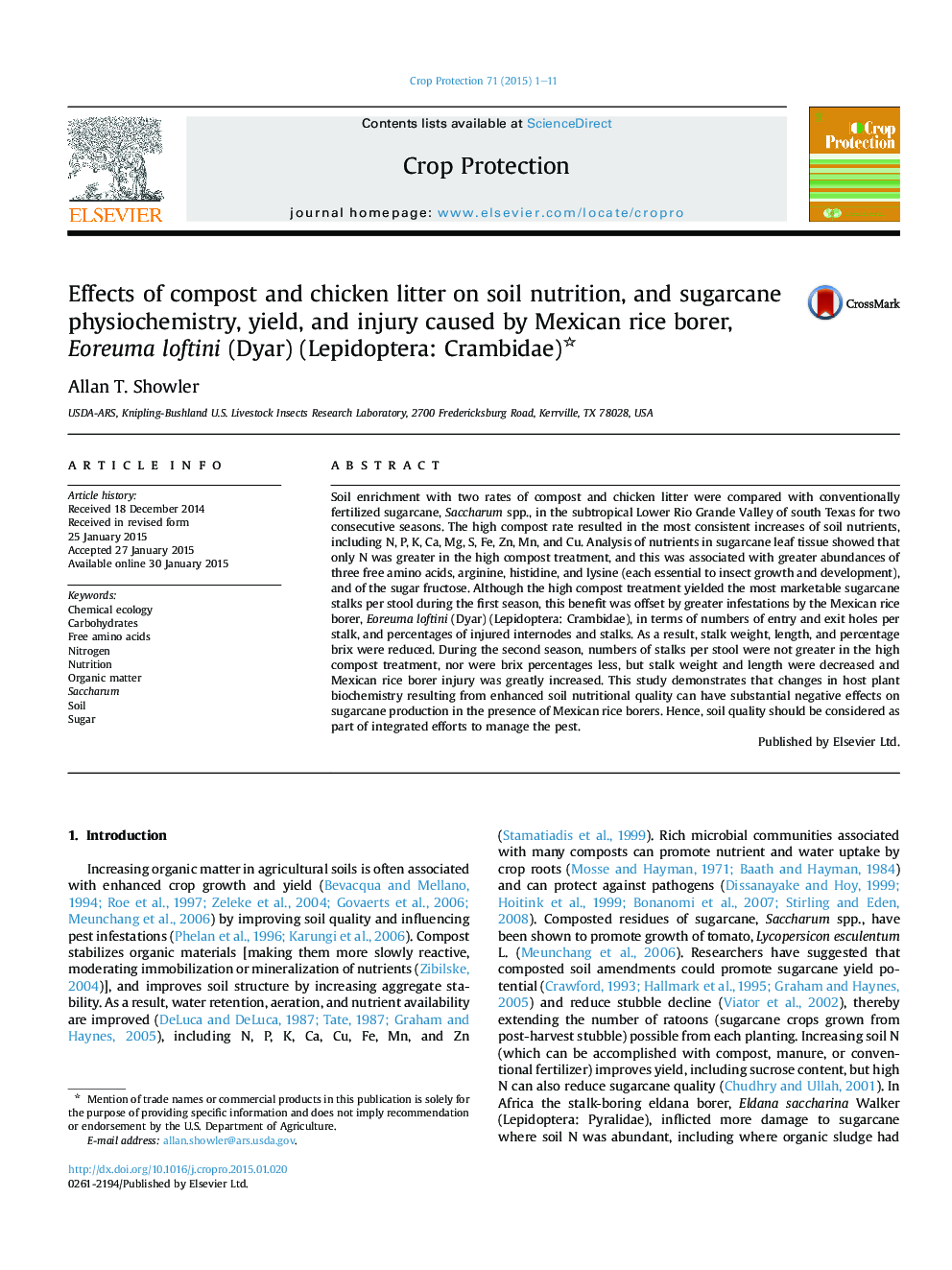| کد مقاله | کد نشریه | سال انتشار | مقاله انگلیسی | نسخه تمام متن |
|---|---|---|---|---|
| 4505706 | 1624316 | 2015 | 11 صفحه PDF | دانلود رایگان |

• Shows effects of augmenting soil with compost and chicken litter on soil nutrition.
• Also shows effects on sugarcane selected aspects of sugarcane biochemistry.
• Describes effects of improved soil nutritional quality on sugarcane growth.
• Relates altered sugarcane tissue chemistry to Mexican rice borer infestation.
• First study to show that Mexican rice borer infestation is related to soil quality.
Soil enrichment with two rates of compost and chicken litter were compared with conventionally fertilized sugarcane, Saccharum spp., in the subtropical Lower Rio Grande Valley of south Texas for two consecutive seasons. The high compost rate resulted in the most consistent increases of soil nutrients, including N, P, K, Ca, Mg, S, Fe, Zn, Mn, and Cu. Analysis of nutrients in sugarcane leaf tissue showed that only N was greater in the high compost treatment, and this was associated with greater abundances of three free amino acids, arginine, histidine, and lysine (each essential to insect growth and development), and of the sugar fructose. Although the high compost treatment yielded the most marketable sugarcane stalks per stool during the first season, this benefit was offset by greater infestations by the Mexican rice borer, Eoreuma loftini (Dyar) (Lepidoptera: Crambidae), in terms of numbers of entry and exit holes per stalk, and percentages of injured internodes and stalks. As a result, stalk weight, length, and percentage brix were reduced. During the second season, numbers of stalks per stool were not greater in the high compost treatment, nor were brix percentages less, but stalk weight and length were decreased and Mexican rice borer injury was greatly increased. This study demonstrates that changes in host plant biochemistry resulting from enhanced soil nutritional quality can have substantial negative effects on sugarcane production in the presence of Mexican rice borers. Hence, soil quality should be considered as part of integrated efforts to manage the pest.
Journal: Crop Protection - Volume 71, May 2015, Pages 1–11